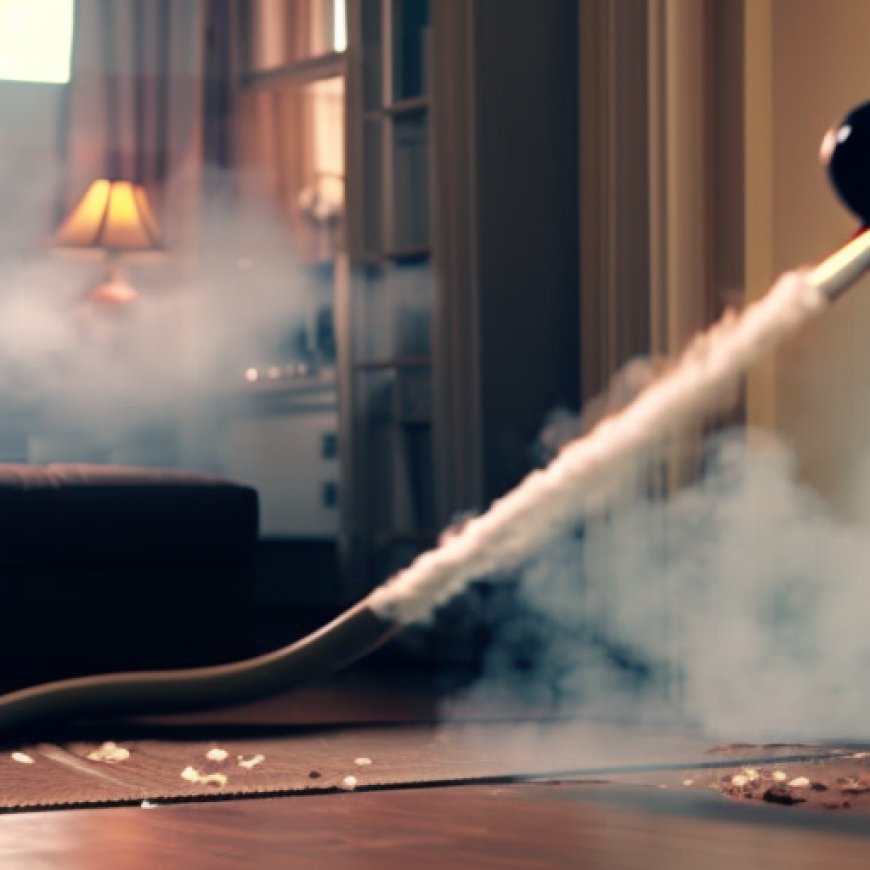Dusting and vacuuming reduce wildfire air pollution inside homes
Dusting and vacuuming reduce wildfire air pollution inside homes New Scientist


Cleaning Surfaces to Reduce Air Pollution from Wildfires

Cleaning surfaces can reduce the levels of polluting gases in the air inside a house
Panther Media / Alamy
Introduction
Cleaning floors and surfaces is the most effective way to reduce a major type of air pollution from wildfires that can persist inside buildings.
Wildfire Smoke and Air Pollution
Smoke from wildfires contains pollutants including particulates, carbon monoxide, and volatile organic compounds (VOCs). These VOCs can be dangerous to people’s health, with some causing irritation and others being possible carcinogens.
The increasing number of wildfire events globally has prompted researchers to study the chemistry of wildfire smoke and its interactions inside buildings. Delphine Farmer at Colorado State University led a study to investigate this issue.
Research Methodology
To replicate wildfire conditions, Farmer and her colleagues injected smoke from burning pinewood chips into a test house 24 times over two weeks. They observed that VOCs tended to collect on surfaces in the house and would be released into the air again once the smoke dissipated. Some VOCs were found to be buried deep into surfaces, indicating that it could take weeks or months for them to be re-emitted.
Findings
The study also explored various cleaning methods to reduce VOCs after smoke exposure. Air-purifying measures such as opening windows and running air filters were effective at quickly reducing VOCs. However, once these measures were stopped, VOC levels rapidly returned to previous concentrations.
Surface-cleaning activities, including dusting, vacuuming, and mopping the floor with a commercial cleaner, were found to be the most effective and long-lasting way to lower VOCs in the air. After cleaning, concentrations of common compounds like formic acid, formaldehyde, and furan dropped between 19 and 50 percent.
Farmer expressed surprise at the effectiveness of surface cleaning, emphasizing that it addresses the problem at its source. She also highlighted that the harmful compounds found in wildfire smoke are commonly present in outdoor air pollution. Therefore, even individuals not living in wildfire zones can significantly improve indoor air quality by simply cleaning surfaces.
Sustainable Development Goals (SDGs)
Topics:
SDGs, Targets, and Indicators
1. Which SDGs are addressed or connected to the issues highlighted in the article?
- SDG 3: Good Health and Well-being
- SDG 11: Sustainable Cities and Communities
- SDG 13: Climate Action
- SDG 15: Life on Land
2. What specific targets under those SDGs can be identified based on the article’s content?
- SDG 3.9: By 2030, substantially reduce the number of deaths and illnesses from hazardous chemicals and air, water, and soil pollution and contamination.
- SDG 11.6: By 2030, reduce the adverse per capita environmental impact of cities, including by paying special attention to air quality and municipal and other waste management.
- SDG 13.2: Integrate climate change measures into national policies, strategies, and planning.
- SDG 15.1: By 2020, ensure the conservation, restoration, and sustainable use of terrestrial and inland freshwater ecosystems and their services.
3. Are there any indicators mentioned or implied in the article that can be used to measure progress towards the identified targets?
- Reduction in the levels of particulates, carbon monoxide, and volatile organic compounds (VOCs) in the air inside buildings.
- Improvement in indoor air quality after surface cleaning activities.
Table: SDGs, Targets, and Indicators
| SDGs | Targets | Indicators |
|---|---|---|
| SDG 3: Good Health and Well-being | SDG 3.9: By 2030, substantially reduce the number of deaths and illnesses from hazardous chemicals and air, water, and soil pollution and contamination. | – Reduction in the levels of particulates, carbon monoxide, and VOCs in the air inside buildings. – Improvement in indoor air quality after surface cleaning activities. |
| SDG 11: Sustainable Cities and Communities | SDG 11.6: By 2030, reduce the adverse per capita environmental impact of cities, including by paying special attention to air quality and municipal and other waste management. | – Reduction in the levels of particulates, carbon monoxide, and VOCs in the air inside buildings. – Improvement in indoor air quality after surface cleaning activities. |
| SDG 13: Climate Action | SDG 13.2: Integrate climate change measures into national policies, strategies, and planning. | – Reduction in the levels of particulates, carbon monoxide, and VOCs in the air inside buildings. – Improvement in indoor air quality after surface cleaning activities. |
| SDG 15: Life on Land | SDG 15.1: By 2020, ensure the conservation, restoration, and sustainable use of terrestrial and inland freshwater ecosystems and their services. | – Reduction in the levels of particulates, carbon monoxide, and VOCs in the air inside buildings. – Improvement in indoor air quality after surface cleaning activities. |
Behold! This splendid article springs forth from the wellspring of knowledge, shaped by a wondrous proprietary AI technology that delved into a vast ocean of data, illuminating the path towards the Sustainable Development Goals. Remember that all rights are reserved by SDG Investors LLC, empowering us to champion progress together.
Source: newscientist.com

Join us, as fellow seekers of change, on a transformative journey at https://sdgtalks.ai/welcome, where you can become a member and actively contribute to shaping a brighter future.







